(Transglobal Car Expedition)
On January 10, the Transglobal Car Expedition team embarked on a historic mission: to circle the Earth by traversing both geographic North and South Poles. They’re heading north from New York City to start their excursion and will arrive back in New York from the south over 18 months and 50,000-plus kilometers (31,000 miles) later. The internationally renowned exploratory team, consisting of eight core men, along with several support staff, has set ambitious goals incorporating “extreme sport adventure, technological innovation, scientific data collection, and educational initiatives.”
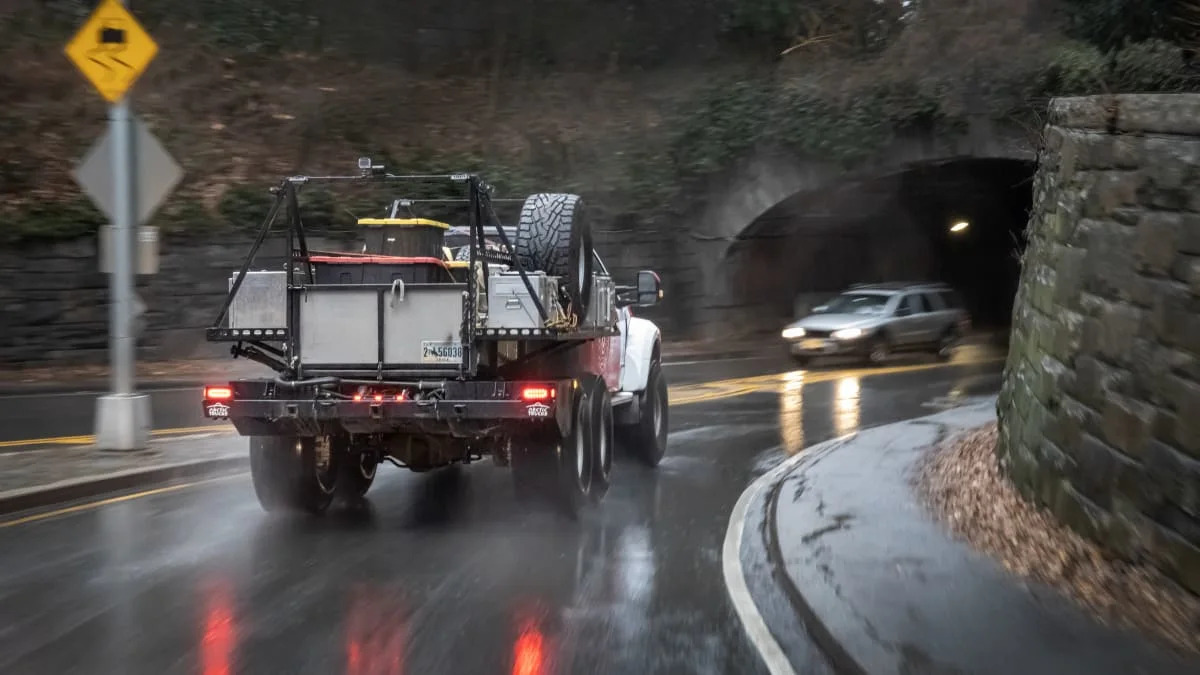
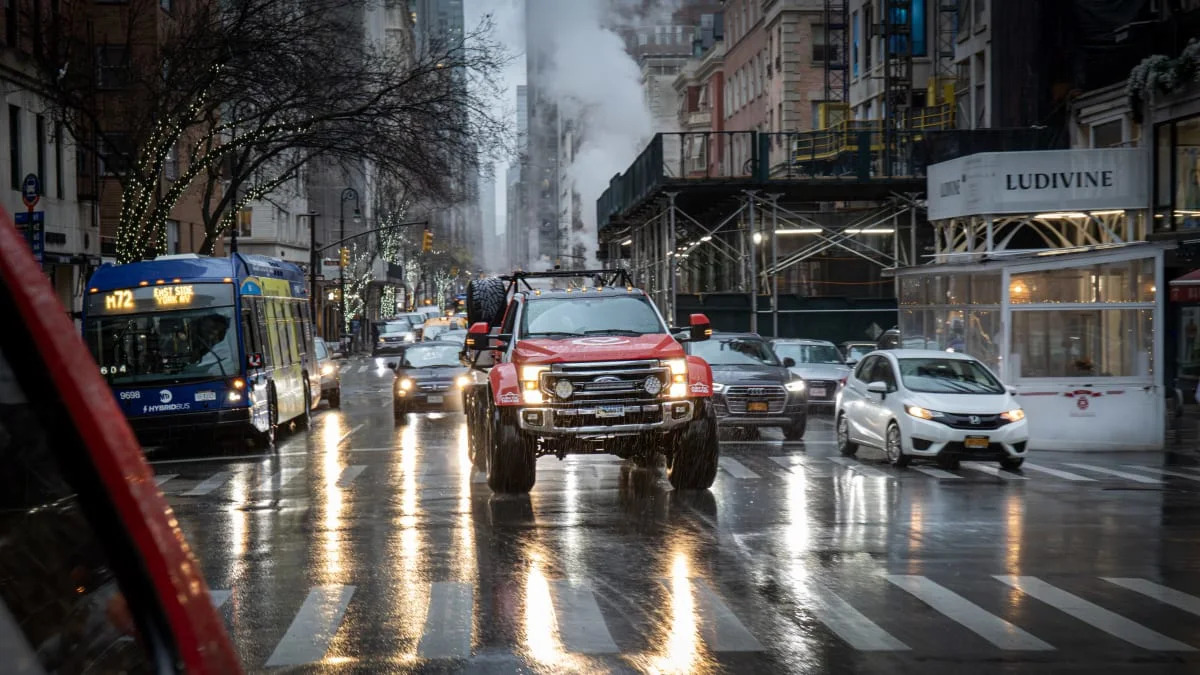
Andrew Comrie-Picard at the expedition’s kickoff in New York. (Mercedes Lilienthal)
Andrew Comrie-Picard, or ACP, may best be known as a North American Rally Champion, X Games medalist, Hollywood feature film stunt driver, and an extreme vehicle expert. But he’s also a global explorer with a major focus on science for the betterment of the environment and beyond. He’s one of the main players.
“I think planning for this expedition extended to at least five years now,” Comrie-Picard said. “The last three years have been very active in preparation, including four pre-expeditions in certain areas for testing. I’d say five years on paper and three years in the field.”
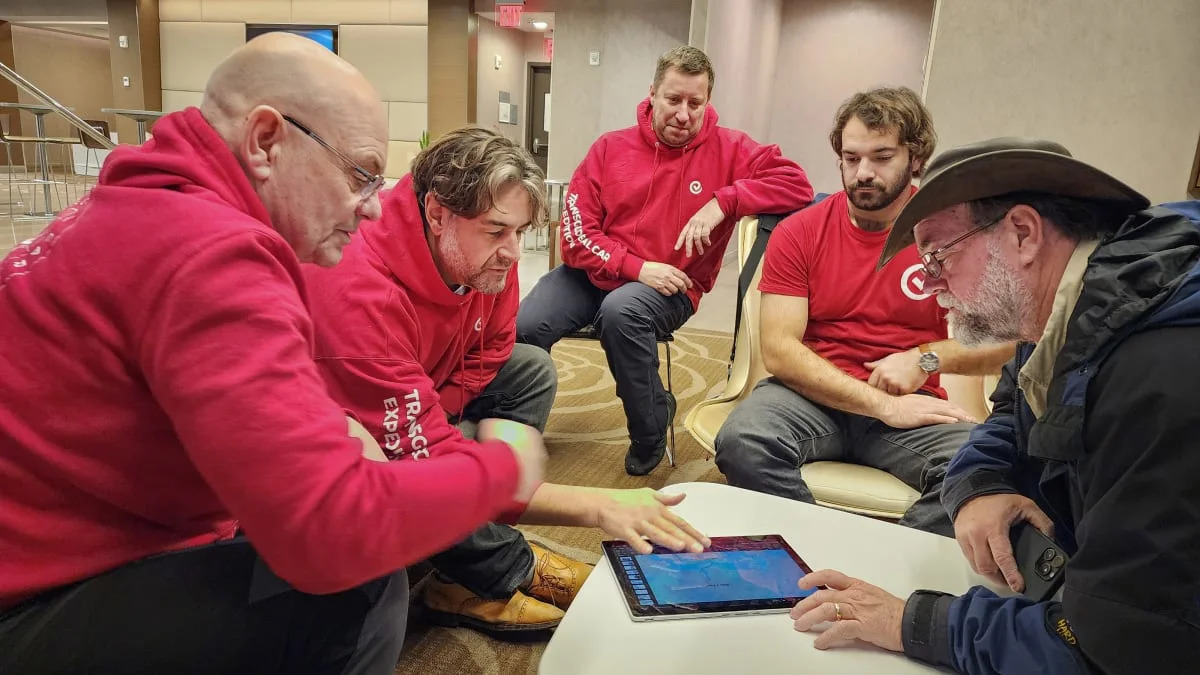
From left, expedition members Emil Grimsson, Andrew Comrie-Picard, Chris Walker (support staff), and Marcel Belperron. The man in black is a journalist. (Mercedes Lilienthal)
Four vehicle types will be involved in this massive expedition: specially built Arctic Truck vehicles (AT44 Ford F150 Hybrid, AT35 Ford Expedition, and AT44 6×6 Ford F350) will be used for specific regions. Amphibious Yemelya special mobile units are standing at the ready for the northern Arctic area.
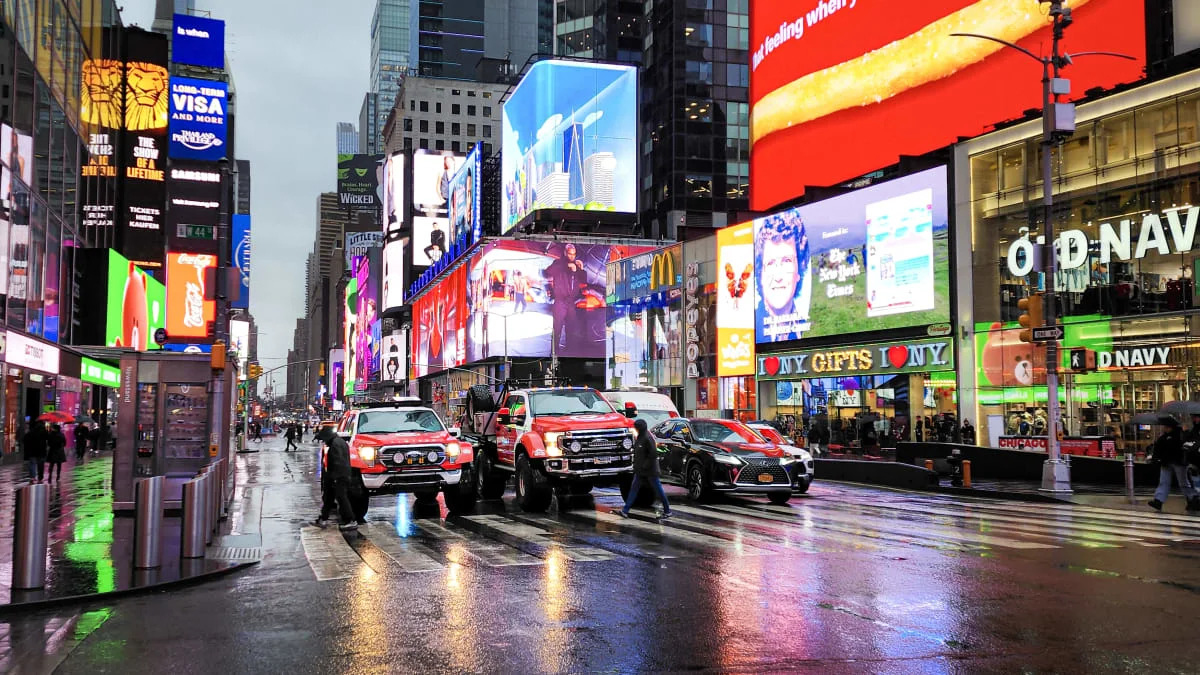
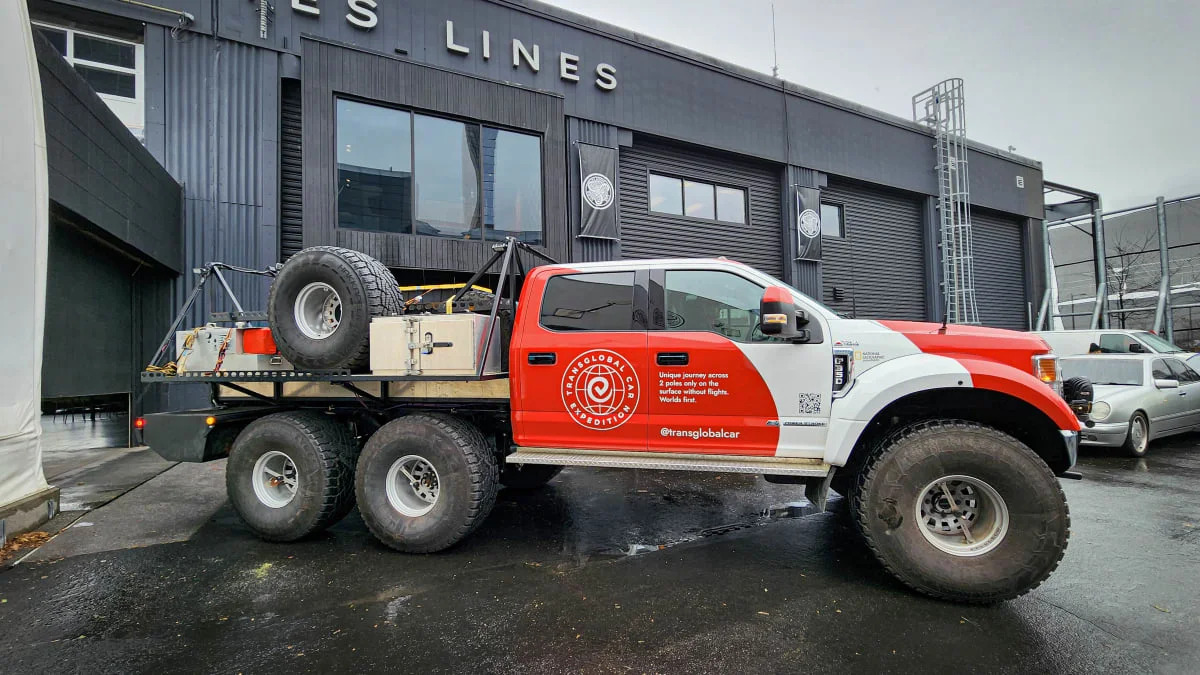
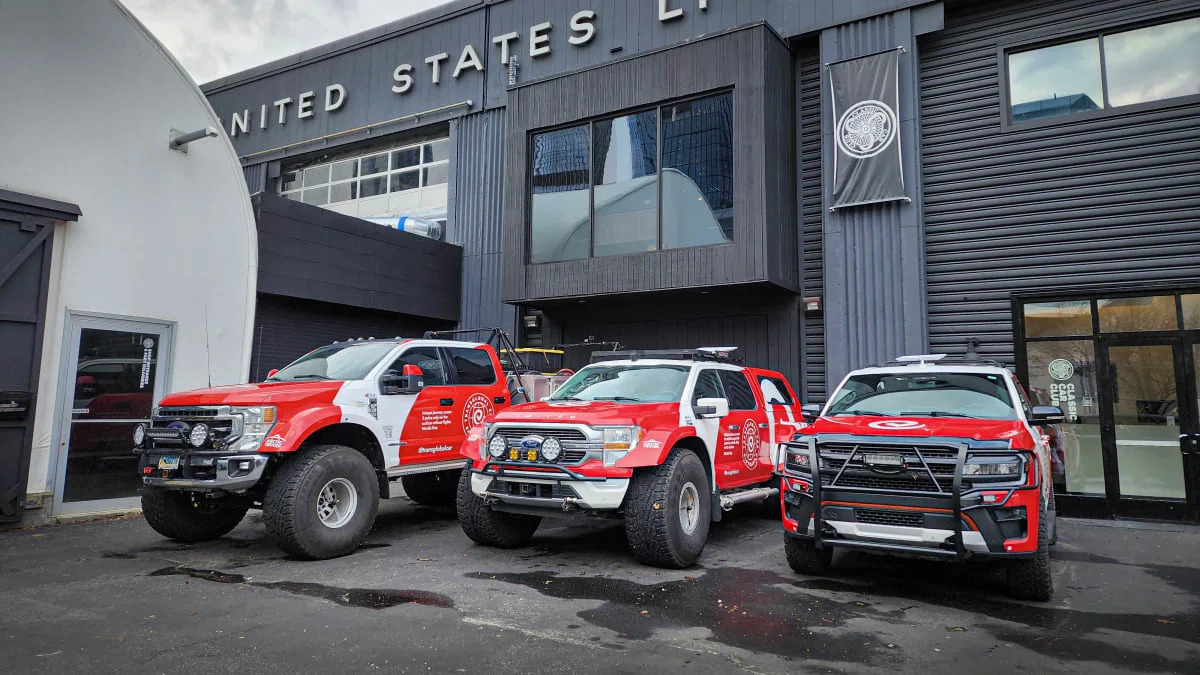
(Mercedes Lilienthal)
The Transglobal Car Expedition is slated to traverse both geographic and magnetic poles in a continuous trajectory. They plan to conduct a wide variety of science experiments, like understanding ice thicknesses via electromagnetic sonar at the North and South Poles, the flow of cosmic radiation coming from far-flung regions of our universe, light pollution and even the study of human physiological changes in extreme environments. The Transglobal Car Expedition’s scientific program includes the measurement of critical considerations and then understands the changes our planet is undergoing within the past several years. In short, these efforts will aid in the search for worldwide solutions to these problems.
A critical group of global scientists and their affiliations are supporting Transglobal Car Expedition. They include personnel like astronaut and engineer Paolo Nespoli, who spent 313 days on the International Space Station. There’s Paola Catapano who works for CERN, the European organization for particle physics, as a science communicator. Rosy Mondardini is the director for research and innovation at the Citizen Science Center in Zurich, an initiative of the University of Zurich and ETH Zurich. Christian Haas, the professor for sea ice geophysics and remote sensing at the University of Bremen, Germany, and others round out the team.
Transglobal Car Expedition’s previous jaunts have pushed many boundaries and had multiple accomplishments. Though it hasn’t come without cost and lessons learned.
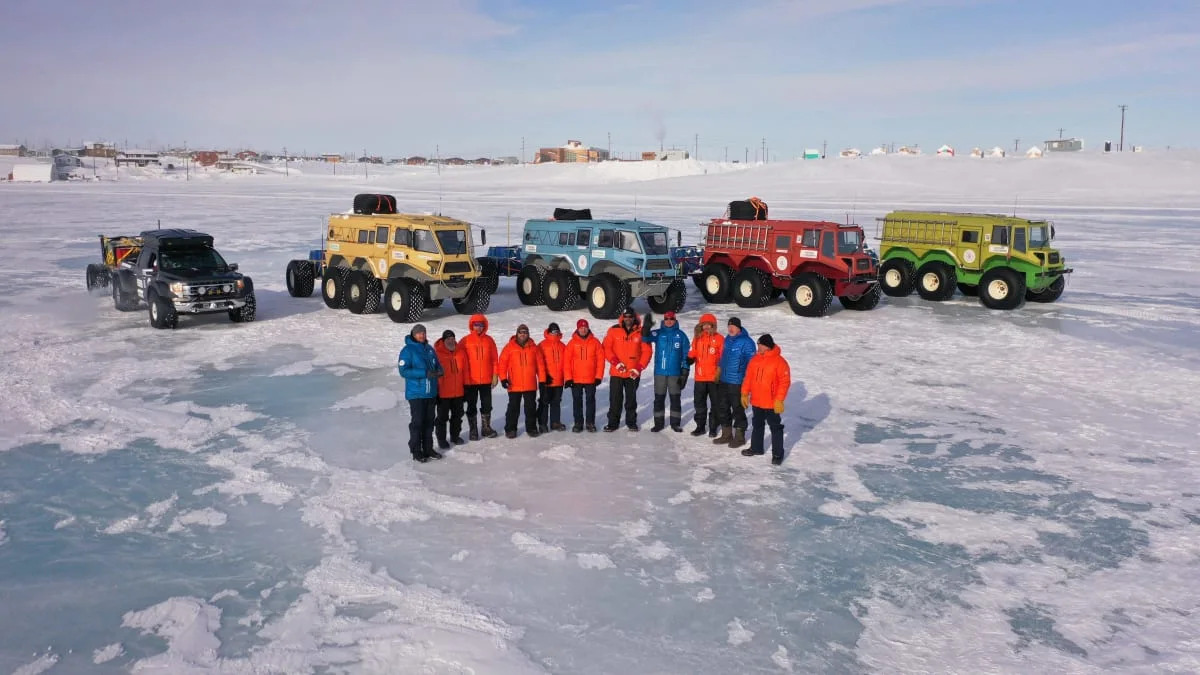
(Transglobal Car Expedition)
In March 2022, the group was driving on the far northern Canadian ice, near the Tasmania Islands in the Nunavut territory (not Australia), when a heavily modified Ford F-150 with 44-inch tires unexpectedly fell through and sank to the ocean floor.
“It was a real eye-opener to us because we’d been pulling [with Christian Haas, our ice scientist] an electromagnetic sonar to read ice depth for the entire route. [We were] logging ice depth and feeding that data back, both in his institution and to the SIKU ice database, for indigenous use for hunting and for movement up there,” Comrie-Picard said.
“When we went up, the ice thickness through this particular section of the Tasmanian Islands was 45 centimeters thick [17.7 inches]. Four days and two hours later, when we came back, it was open water. We didn’t know the ice could deteriorate that quickly.”
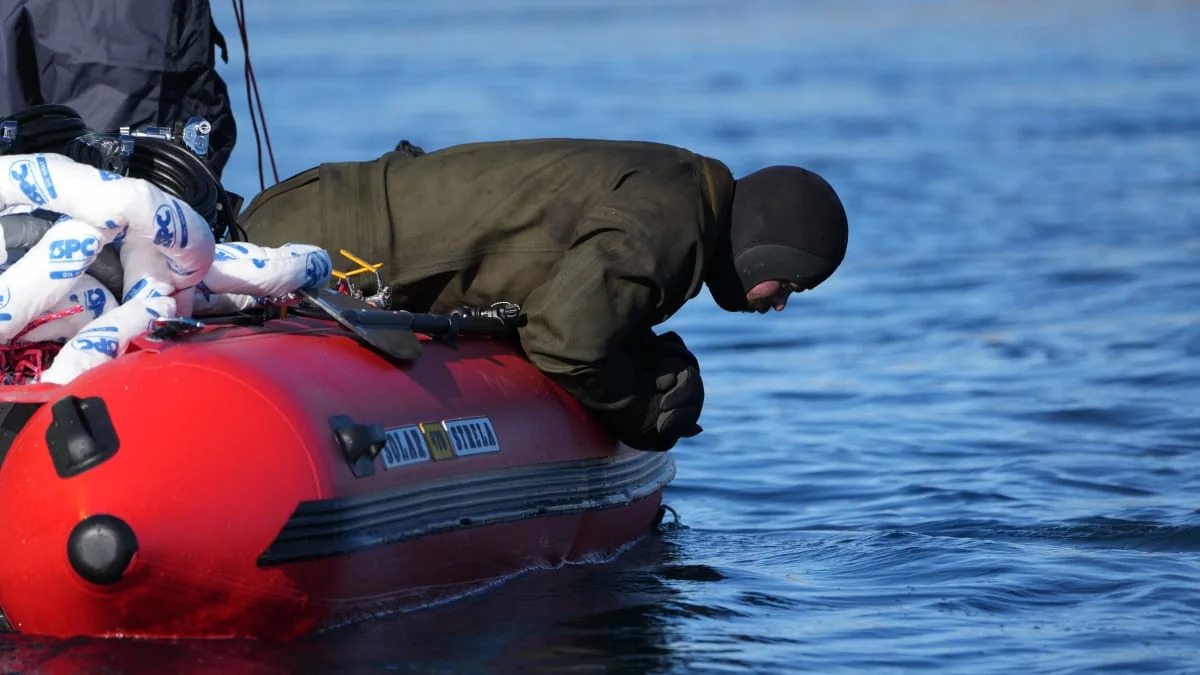
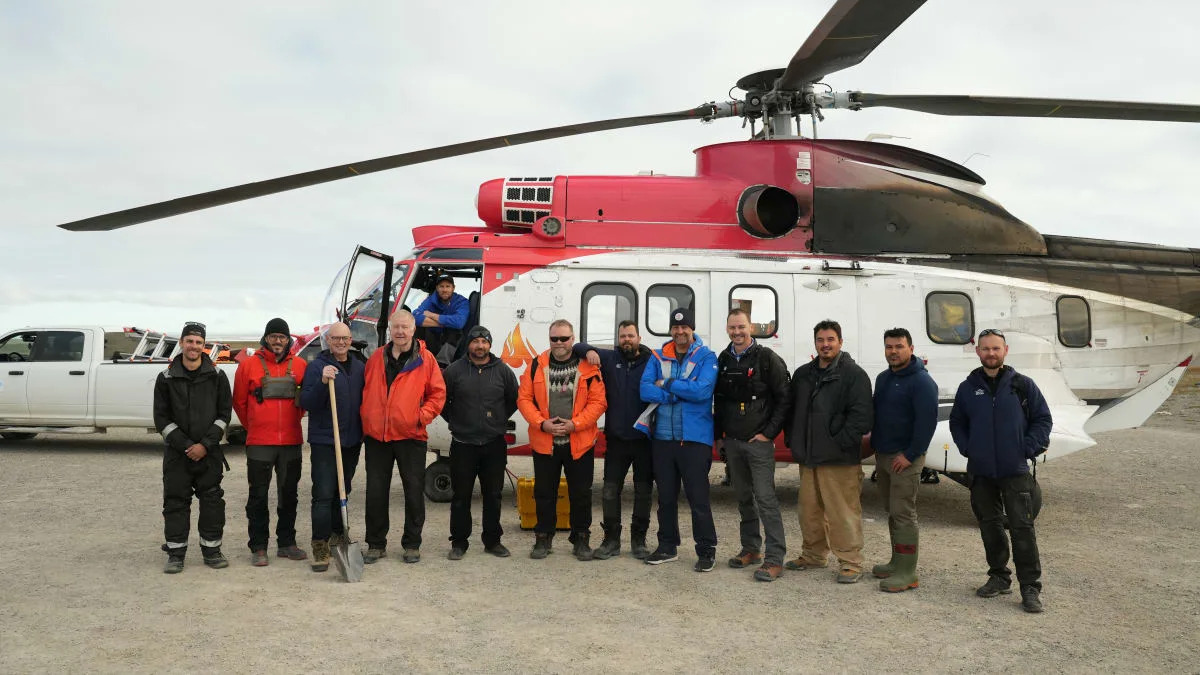
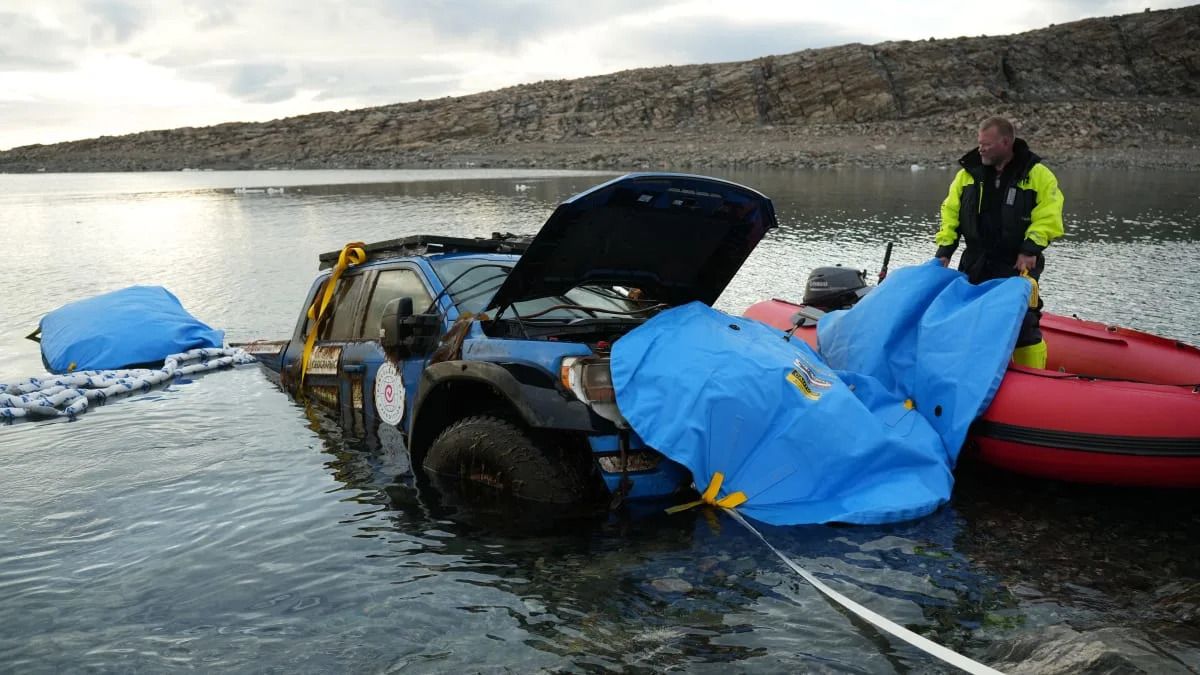
(Transglobal Car Expedition)
Focusing on leaving minimal footprints no matter where they go, the Transglobal Car Expedition team went back the following August with specialized ice divers to recover their vehicle.
“I was there,” Comrie-Picard said. “We found the vehicle under the water, attached airbags to it, and then lifted it to the surface by helicopter. It was a massive operation.”
The team found that, fortunately, no diesel or oil was leaked in the process. Only a small amount of axle oil, approximately less than two liters, may have been lost. “We went back, cleaned the area, took everything out, and have learned from the experience,” Comrie-Picard said.
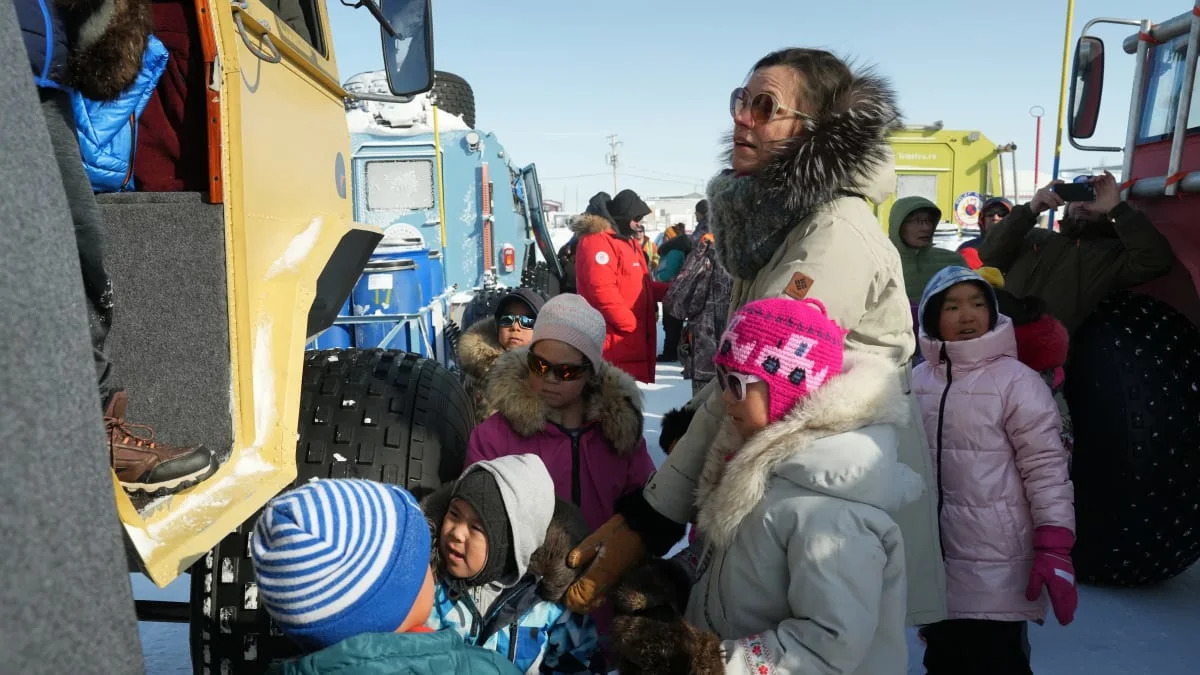
(Transglobal Car Expedition)
Since then, the Transglobal Car Expedition team has developed deeper relationships with the indigenous people and the Canadian government.
“We worked extensively with the communities in Cambridge Bay, Gjoa Haven, and Taloyoak on the planning [to recover the vehicle]. We had four Inuit team members on the extraction, including two helping us in the water and with camera operations,” Comrie-Picard said. “They worked as guides and showed us all over the land, including virgin historical sites we found together and reported to the Kitikmeot Heritage organization.”
Every day Transglobal Car Expedition spends in the North enhances their relationship with indigenous people. They’ve become friends with many of them and in Taloyoak, the northernmost community in mainland Canada, the town closes its school for the day when they pass through so everyone can connect.
Follow along as their expedition continues.

(Transglobal Car Expedition)
